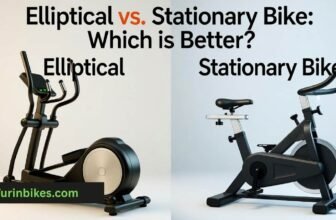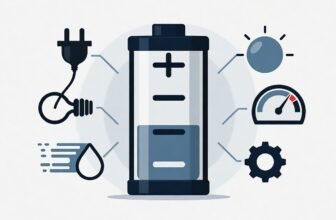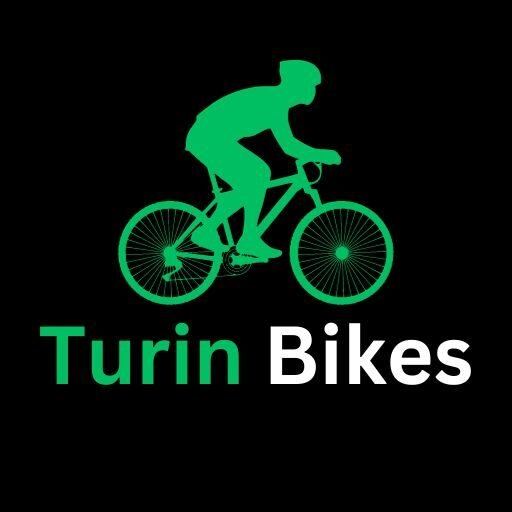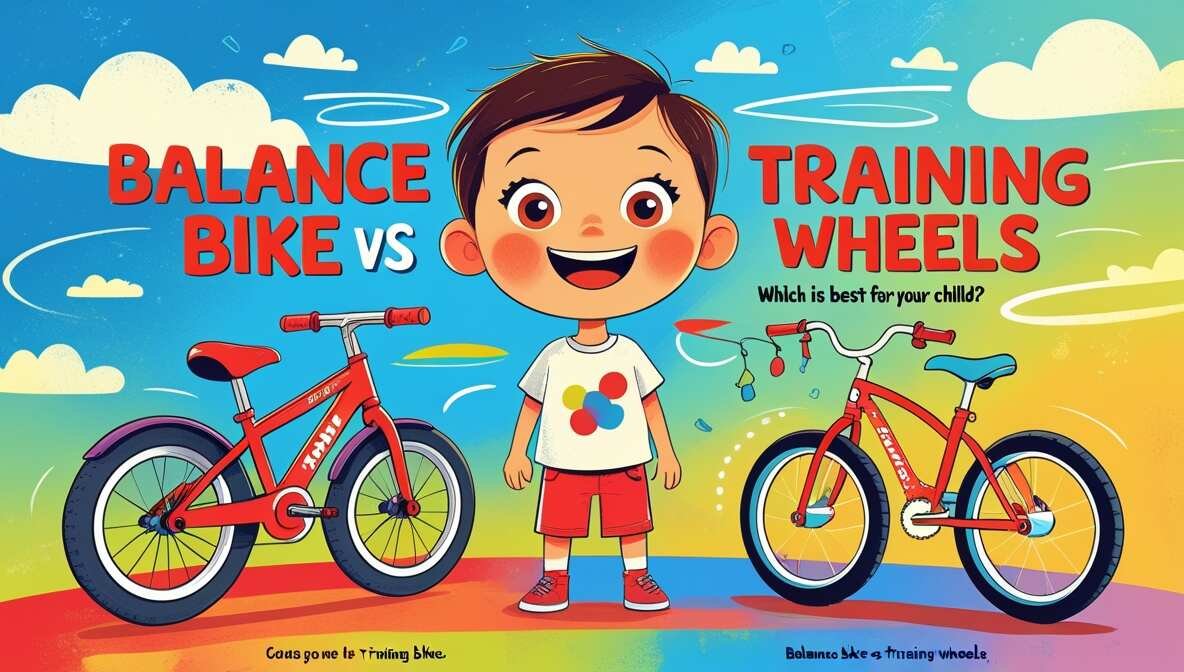
Balance Bike vs Training Wheels—what’s the best way to teach your child to ride? Choosing the right learning method can feel overwhelming, but understanding the key differences will help you make the best decision for your little rider.
Balance bikes focus on developing coordination and stability without pedals, while training wheels offer extra support, allowing kids to learn pedaling first.
In this guide, we’ll compare both methods in terms of skill development, safety, ease of learning, and long-term benefits, so you can confidently choose the right option for your child’s biking journey.
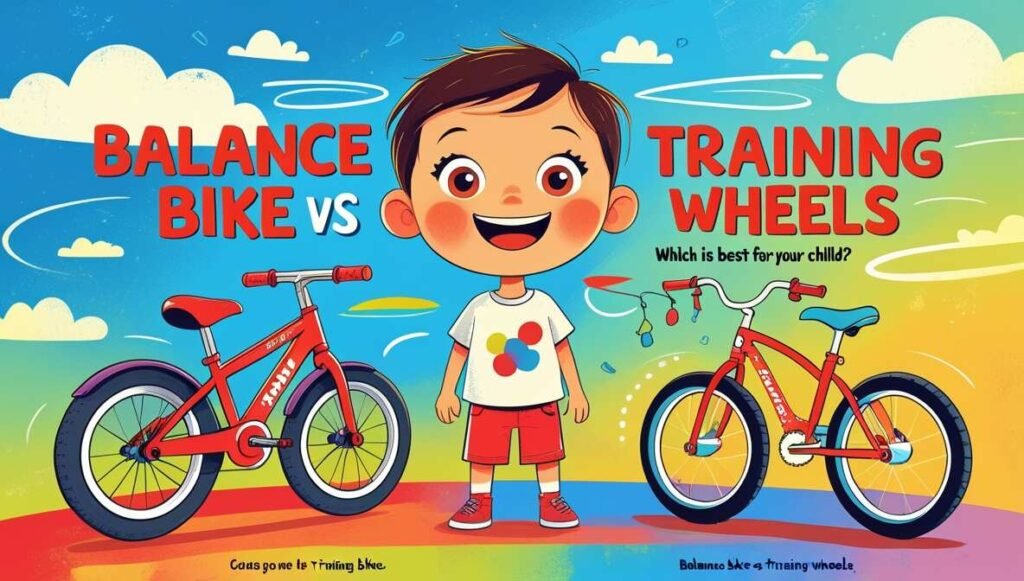
What is a Balance Bike?
A balance bike is a pedal-free bicycle designed to help young children learn balance and coordination before transitioning to a traditional bike. Instead of pedaling, kids use their feet to push off the ground and glide, naturally developing their sense of balance.
Age Range Suitability
🔹 Ideal for ages 18 months to 5 years.
🔹 Best for toddlers learning to walk and improve motor skills.
Key Features & Benefits
✅ Lightweight Frame: Easy for kids to maneuver.
✅ No Pedals: Focuses on balance rather than pedaling.
✅ Adjustable Seat & Handlebars: Grows with your child.
✅ Boosts Confidence: Kids learn at their own pace.
✅ Smooth Transition to Pedal Bikes: No need for training wheels later.
Balance bikes provide a fun, natural way for kids to master bike riding skills early, making it easier to switch to a regular bike without fear.
What Are Training Wheels?
Training wheels are small support wheels attached to the rear wheel of a regular pedal bike. They help keep the bike upright, allowing kids to focus on pedaling without worrying about balance. As the child gains confidence, the wheels can be gradually raised or removed.
Age Range Suitability
🔹 Best for ages 3 to 6 years.
🔹 Suitable for kids who are ready to pedal but need balance support.
Key Features & Benefits
✅ Provides Stability: Prevents tipping over while pedaling.
✅ Easy Pedaling Practice: Helps kids develop leg strength.
✅ Familiar Bike Design: Looks like a standard bicycle.
✅ Adjustable Support: Wheels can be raised as balance improves.
✅ Gradual Transition to Two Wheels: Helps kids gain confidence.
Training wheels are a traditional learning method, offering support while children get comfortable with pedaling before mastering balance.
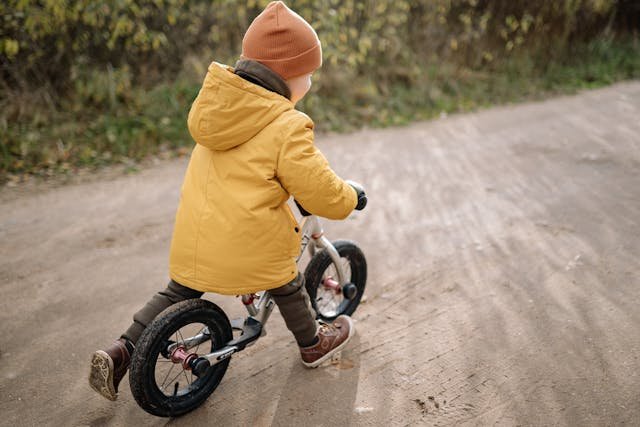
Balance Bike vs Training Wheels: Detailed Comparison
When choosing between a balance bike vs. training wheels, it’s essential to compare their impact on skill development, safety, and ease of transition to a pedal bike. Let’s break it down in detail.
A. Balance Bike and Training Wheels Developmental Benefits
Balance and Coordination
🔹 Balance Bikes: Teach children to naturally develop balance and coordination by using their feet to push and glide. This method strengthens their core and improves overall stability.
🔹 Training Wheels: Focus on pedaling first, but don’t require kids to balance. This means they may struggle with balance once the training wheels are removed.
Motor Skill Development
🔹 Balance Bikes: Enhance fine and gross motor skills by engaging the whole body. Steering, stopping, and gliding require better coordination.
🔹 Training Wheels: Help develop leg strength through pedaling but do little to improve balance-related motor skills.
B. Balance Bike or Training Wheels Safety Considerations
Stability and Risk of Falls
🔹 Balance Bikes: Lower to the ground, reducing the risk of injury. Kids can place their feet down quickly for stability.
🔹 Training Wheels: Can tip over if the child leans too much, leading to an increased risk of falls on uneven surfaces.
Control and Maneuverability
🔹 Balance Bikes: Offer better control since kids learn to steer and balance naturally.
🔹 Training Wheels: Can create a false sense of security, making it harder for kids to steer properly when they transition to two wheels.
C. Balance Bike vs Training Wheels Ease of Transition to Pedal Bikes
Learning Curve
🔹 Balance Bikes: Easier transition since kids already master balance. They just need to learn pedaling when upgrading to a regular bike.
🔹 Training Wheels: Harder transition because kids must learn balance from scratch after relying on the extra wheels.
Confidence Building
🔹 Balance Bikes: Help kids gain confidence as they gradually increase their gliding distance.
🔹 Training Wheels: Can give temporary confidence but may create dependency, making the switch to a regular bike more challenging.
D. Balance Bike vs Training Wheels Terrain Adaptability
Performance on Various Surfaces
🔹 Balance Bikes: Work well on sidewalks, grass, gravel, and even indoor surfaces due to their lightweight design.
🔹 Training Wheels: Struggle on uneven terrain as the extra wheels can wobble or get stuck.
Indoor vs. Outdoor Use
🔹 Balance Bikes: Can be used indoors (on smooth floors) and outdoors, making them more versatile.
🔹 Training Wheels: Primarily for outdoor use, as they require more space and stable ground.

Expert Opinions on Balance Bike vs. Training Wheels
Insights from Pediatric Physical Therapists
Experts agree that balance bikes are better for early childhood development because they teach natural balance and coordination. Pediatric physical therapists recommend them for younger children (18 months to 5 years) as they help develop core strength, motor skills, and spatial awareness. In contrast, training wheels delay balance development, making the transition to a regular bike harder.
Educational Perspectives on Learning to Ride
Child development specialists emphasize that balance-first learning (using a balance bike) mimics how kids naturally progress from crawling to walking. It encourages independent learning and confidence-building. Training wheels, on the other hand, can create a reliance on support, making the switch to two wheels more challenging.
Final Expert Takeaway
Most experts favor balance bikes as they lead to an easier, faster transition to pedal bikes, while training wheels are often seen as a slower, less effective method. 🚲✨
Would you like recommendations for expert-approved balance bikes?
What Parent Says About Balance Bike vs. Training Wheels
Real-Life Experiences with Balance Bikes
🗣️ “My 3-year-old started on a balance bike, and within months, he was gliding effortlessly. When we moved to a pedal bike, he didn’t even need training wheels—it was a seamless transition!” – Emily, mom of a 4-year-old
🗣️ “The balance bike helped my daughter build confidence and coordination. She learned to steer and balance naturally, and we never had to deal with the struggle of removing training wheels!” – Jake, dad of a 5-year-old
Real-Life Experiences with Training Wheels
🗣️ “My son learned to pedal quickly with training wheels, but when we removed them, he struggled with balance and was scared to ride without support.” – Sarah, mom of a 6-year-old
🗣️ “Training wheels gave my child confidence at first, but they made turns difficult, and he relied too much on them. Switching to two wheels was a challenge.” – Mark, dad of a 7-year-old
Final Takeaway from Parents
Many parents who started with balance bikes found the transition to pedal bikes much easier, while those who used training wheels often experienced difficulties when removing them. 🚲✨
Would you like help choosing the best balance bike or training wheel bike for your child?
Conclusion: Balance Bike vs. Training Wheels – Which One is Best?
When comparing balance bike vs. training wheels, the right choice depends on your child’s learning style and developmental stage. Balance bikes help children develop natural balance, coordination, and confidence, making the transition to a pedal bike much smoother. They are lightweight, safe, and adaptable to various terrains. On the other hand, training wheels allow kids to focus on pedaling first, but they can create a reliance on extra support, making it harder to learn balance later.
For younger children (18 months to 5 years), a balance bike is the best choice, as it encourages independent learning and makes riding a regular bike effortless. If your child is older (3 to 6 years) and eager to start pedaling right away, training wheels can be an option, though the transition to two wheels may take longer. Ultimately, balance bikes offer a more natural and effective learning experience, while training wheels work best for kids who need extra time with pedaling.
At what age should my child start using a balance bike?
Children can start using a balance bike as early as 18 months and typically up to 5 years old.
How long does it typically take for a child to transition from a balance bike to a pedal bike?
Most kids transition to a pedal bike within a few weeks to a few months, depending on practice.
Are there any safety accessories recommended for balance bikes?
Yes! A helmet is essential, and knee and elbow pads provide extra protection.
Is it better to use a balance bike or training wheels?
A balance bike is better for learning balance naturally, while training wheels focus on pedaling but delay balance development.
What is a good age for a bike with training wheels?
Training wheels are typically used for kids aged 3 to 6 years who are learning to pedal but need support.
Meet Sachin Kumar, an avid cyclist and bike enthusiast with a passion for two-wheeled adventures. At our Turinbikes site, Sachin shares expert insights, thrilling ride experiences, and tips for fellow bike lovers.



